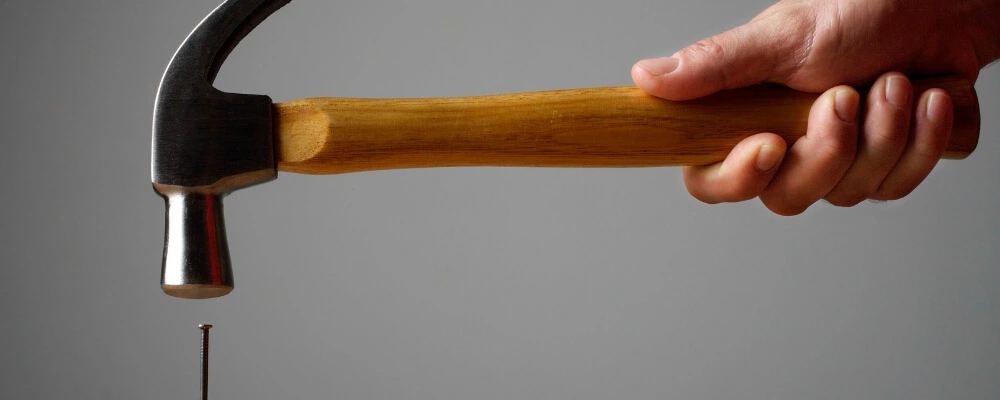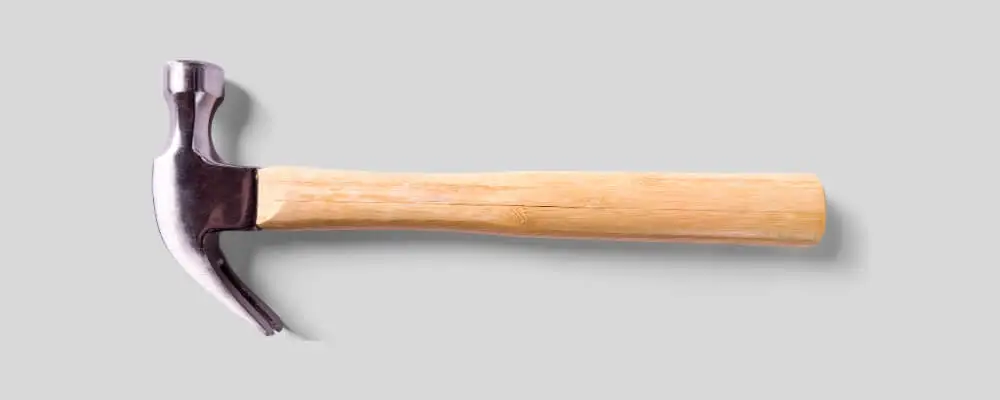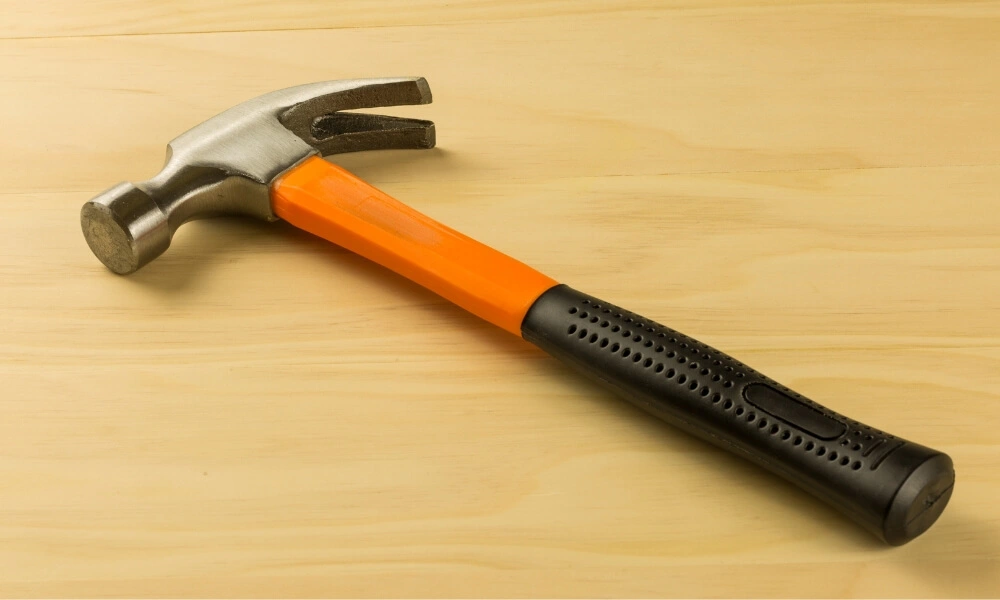A hammer, one of the oldest and most used tools in human history, remains an indispensable instrument in various fields and household tasks. Its simplistic design, consisting of a handle and a head, belies its multifaceted utility. From construction sites to household DIY projects, the hammer finds its place, proving its worth in numerous applications.
This blog delves into the myriad uses of this versatile tool, exploring its role in activities such as nailing, shaping metal, breaking objects, and even tenderizing meat. We will also discuss the importance of using a hammer safely, providing tips to ensure that every strike is not only effective but also secure.
Whether you are a seasoned craftsman, a hobbyist, or someone who rarely picks up a tool, understanding the diverse uses and safety precautions of a hammer can enhance your efficiency and ensure your well-being as you undertake various tasks.
10 Uses of Hammer
A hammer is a versatile hand tool that has numerous uses in various tasks, both in construction and everyday life. Here are 10 common uses for a hammer:
- Nailing: A hammer is commonly used for driving nails into various materials such as wood or walls. This is one of the most fundamental uses of a hammer, enabling the user to fix objects together securely. The force applied to the nail by the hammer ensures a tight and secure fit, making it an indispensable tool in construction and household tasks.
- Removing Nails: The claw end of a hammer is designed to remove nails efficiently. By leveraging the claw around the nail and applying a pulling force, users can extract nails from surfaces without causing significant damage. This feature is particularly useful in deconstruction or when correcting mistakes during building projects.
- Breaking Objects: Hammers are instrumental in breaking hard objects like tiles, bricks, or concrete. The impact from a hammer can create fractures in these materials, allowing for controlled demolition or adjustment of structures. This is especially useful in renovation projects or when altering the layout of brick or tile arrangements.
- Shaping Metal: In metalworking, a hammer is used to shape or bend metal objects to the desired form. By striking metal with controlled force, users can manipulate its shape for various applications, such as creating metal artworks, repairing vehicles, or fabricating metal components.
- Tightening Fit: Hammers are also used to adjust the fit of metal or wood joints. A few controlled strikes can help in fitting components together more snugly, ensuring the stability and integrity of the constructed object. This application is crucial in carpentry and metal assembly processes where precision and tight fits are paramount.
- Tamping: The flat face of a hammer can be used for tamping or compacting surfaces. This is useful in landscaping or construction where a level ground or surface is required. By repeatedly striking the ground, users can flatten uneven surfaces, preparing them for further construction or planting.
- Chiseling: When paired with a chisel, a hammer becomes a tool for carving or cutting materials. The hammer strikes the end of the chisel, driving it into the material to remove unwanted parts or create designs. This technique is widely used in woodworking, masonry, and sculpture creation.
- Furniture Assembly: Hammers play a vital role in assembling or disassembling furniture pieces. They can be used to insert dowels, adjust components, or dismantle assembled furniture. The versatility of a hammer makes it a valuable tool in furniture making and maintenance.
- Tenderizing Meat: In culinary applications, a meat mallet, a type of hammer, is used to tenderize meat. By striking meat with the mallet, the muscle fibers are broken down, making the meat more tender and absorbent to marinades. This process is essential in preparing certain dishes where softness and flavor absorption are desired.
- Crafting and Jewelry Making: Hammers are used in crafting and jewelry making for shaping, forming, and texturing materials. The controlled impact of a hammer can modify the appearance and structure of metals and other materials, allowing artisans to create intricate designs and unique pieces.

10 Safety Tips to Follow When Using a Hammer
Using a hammer safely is essential to prevent accidents and injuries. Here are 10 safety tips to follow when using a hammer:
1. Wear Protective Gear
It is crucial to wear safety glasses when using a hammer to shield the eyes from flying debris, which can cause serious injuries. Protective gear ensures that users can operate hammers safely without risking damage to their eyesight.
2. Use the Right Hammer
Selecting the appropriate type and size of hammer for the task is essential. Different hammers are designed for specific jobs, and using the right one ensures efficiency and reduces the risk of accidents. A well-chosen hammer can make the task at hand much more manageable and safer.
3. Inspect the Hammer
Before using a hammer, it is vital to inspect it for any damage, such as cracks in the handle or head. Using a damaged hammer can be dangerous as it may break during use, leading to potential injuries. Regular inspection helps in identifying issues early and prevents accidents.
4. Secure Your Workpiece
Ensuring that the object being worked on is stable and secure is fundamental. A stable workpiece allows for more accurate and safer hammering, preventing the object from moving and causing mishaps. Securing the workpiece properly is a basic precaution that can significantly reduce the risk of accidents.
5. Use a Claw Bar
When removing nails, it is advisable to use a claw bar to avoid straining the hand. A claw bar provides better leverage and makes the process of extracting nails more efficient and less physically demanding, reducing the risk of strain injuries.
6. Hold the Hammer Correctly
Gripping the handle near the end and keeping the wrist straight when swinging is essential for effective and safe hammer use. Proper grip and posture enable better control and force application, minimizing the chances of missing the target and causing injuries.
7. Avoid Overreach
Maintaining a balanced stance and avoiding overreaching or stretching awkwardly when using the hammer is crucial for safety. Overreaching can lead to loss of balance and inaccurate strikes, increasing the risk of accidents and injuries.

8. Keep Your Work Area Clean
A clutter-free work area is essential to reduce the risk of tripping or knocking over objects while using a hammer. A clean and organized workspace allows for better movement and focus, contributing to overall safety during hammer use.
9. Store Properly
Storing the hammer in a dry, secure place is important to avoid damage to the tool and accidental injuries. Proper storage ensures the longevity of the hammer and keeps it in good condition for future use.
Avoid Striking Hard Metals: Striking hard metals or objects with a hammer can lead to chipping or shattering of the hammerhead, which can be extremely dangerous. It is important to be mindful of the materials being struck and to use the hammer appropriately to avoid such risks.
Conclusion
In conclusion, the humble hammer, with its simple yet effective design, plays a pivotal role in countless aspects of our lives. We’ve explored its versatility in tasks ranging from construction to culinary arts, showcasing how this tool is a true workhorse in our daily endeavors.
However, it’s not just about what a hammer can do; it’s also about how we use it. Safety should always be a paramount concern when wielding such a powerful tool. By adhering to the safety tips discussed, we can mitigate risks and ensure that every swing is not only productive but also injury-free.
So, whether you’re a seasoned professional or a novice DIY enthusiast, the hammer remains a faithful companion in your journey of creating, building and shaping the world around you. Its significance lies not just in its physical presence but in the countless projects and memories it helps create.
As we continue to innovate and develop new tools, the hammer remains a timeless symbol of craftsmanship, resilience, and the enduring human spirit to shape and build our world, one strike at a time.

